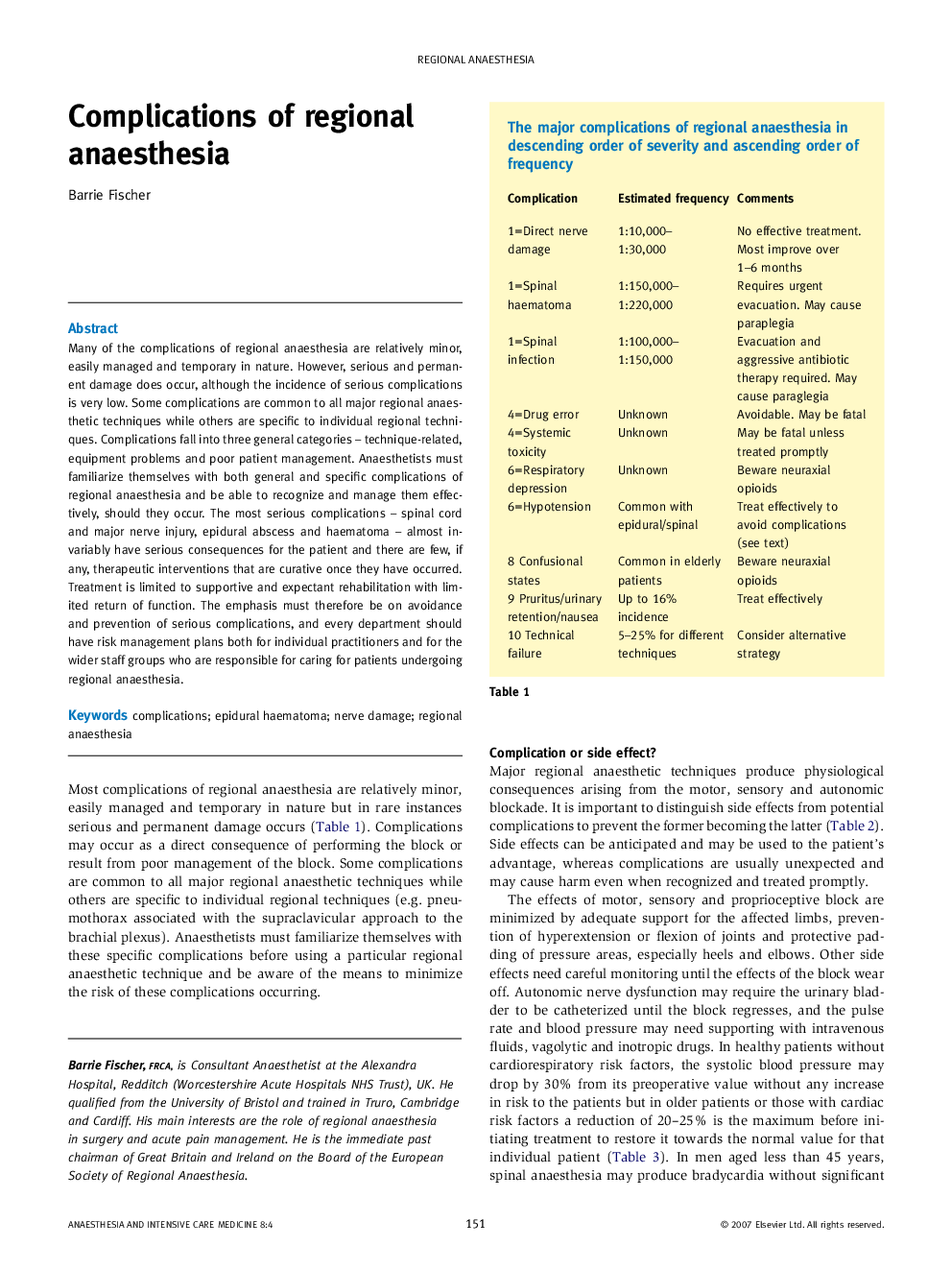| Article ID | Journal | Published Year | Pages | File Type |
|---|---|---|---|---|
| 2743216 | Anaesthesia & Intensive Care Medicine | 2007 | 4 Pages |
Many of the complications of regional anaesthesia are relatively minor, easily managed and temporary in nature. However, serious and permanent damage does occur, although the incidence of serious complications is very low. Some complications are common to all major regional anaesthetic techniques while others are specific to individual regional techniques. Complications fall into three general categories – technique-related, equipment problems and poor patient management. Anaesthetists must familiarize themselves with both general and specific complications of regional anaesthesia and be able to recognize and manage them effectively, should they occur. The most serious complications – spinal cord and major nerve injury, epidural abscess and haematoma – almost invariably have serious consequences for the patient and there are few, if any, therapeutic interventions that are curative once they have occurred. Treatment is limited to supportive and expectant rehabilitation with limited return of function. The emphasis must therefore be on avoidance and prevention of serious complications, and every department should have risk management plans both for individual practitioners and for the wider staff groups who are responsible for caring for patients undergoing regional anaesthesia.
